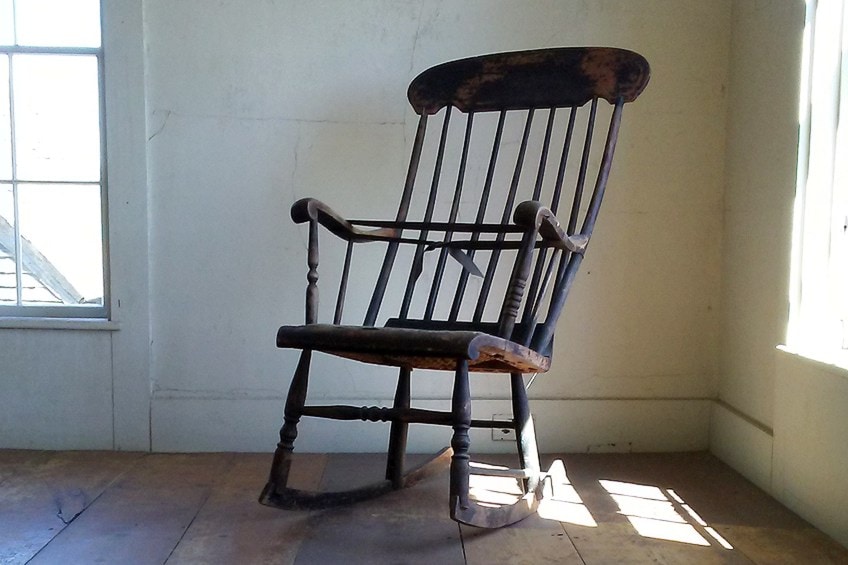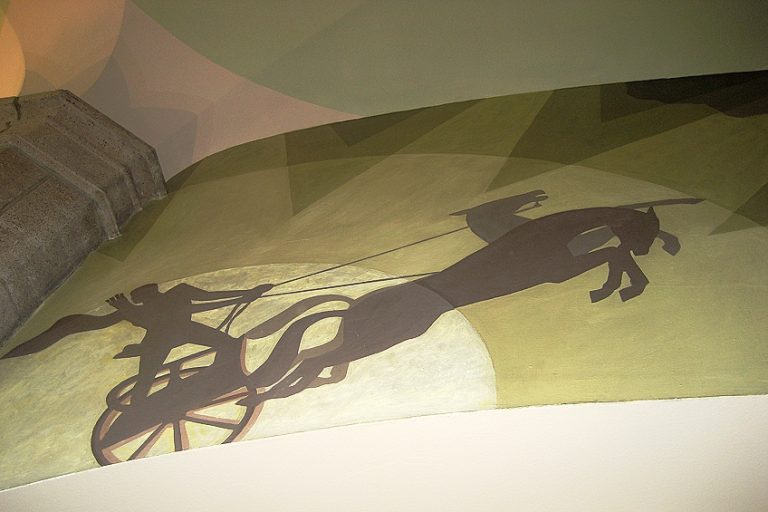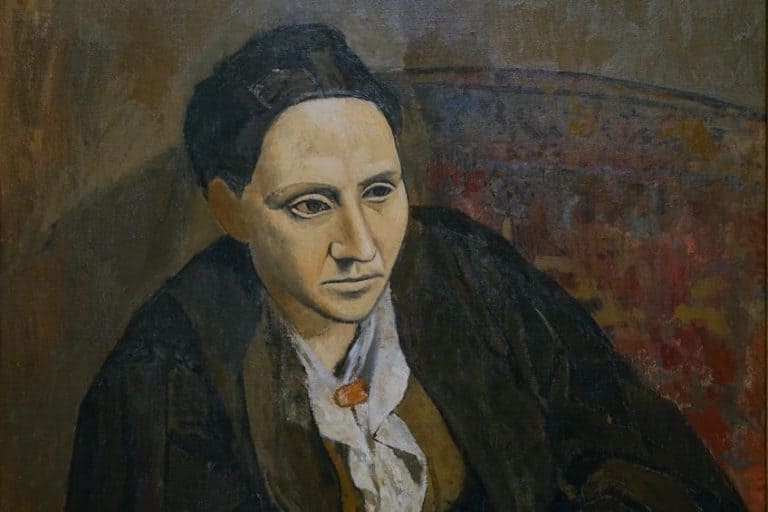“Christina’s World” by Andrew Wyeth – An In-Depth Analysis
Christina’s World (1948) by renowned American artist Andrew Wyeth is a famous painting of a young woman in a field, who appears to reach out into the distant horizon as she lays helpless on the ground. Often described as kitsch, pastoral, and nostalgic, this famous painting has remained a sentimental part of American art history that intrigues many. Who was this woman, and why did Wyeth paint her? In this article, we will dive into an in-depth analysis of Christina’s World to uncover the burning questions surrounding its subject. Read on to discover all the interesting facts about this iconic portrait of metaphoric realism!
Table of Contents
Artist Abstract: Who Was Andrew Wyeth?
Andrew Newell Wyeth was born on July 12, 1917, and died on January 16, 2009. He was born in Chadds Ford, Pennsylvania, United States, and received his artistic training from his father Newell Convers Wyeth, who was a well-known illustrator. Andrew Wyeth learned drawing from an early age and began creating illustrations in a similar style to that of his father’s work, but eventually, he shifted his attention to watercolors.
In 1937, Wyeth held his first solo exhibition at Robert Macbeth’s gallery in New York City and had since been categorized as a realist or regionalist painter for his depictions of landscapes and people. In 1940, he married Betsy James, who occasionally modeled for a few of Wyeth’s paintings.
Wyeth went on to become an important and influential American artist, whose artworks were also frequently a point of reference in pop culture.

Christina’s World (1948) by Andrew Wyeth in Context
Below, we will provide a contextual analysis of Andrew Wyeth’s painting Christina’s World, as well as the key information on who Christina was and what motivated him to paint her. We will also explore a formal analysis of the painting and how Wyeth applied art elements like color, texture, space, form, shape, and line to create this iconic portrait.
| Artist Name | Andrew Wyeth (1917 – 2009) |
| Date | 1948 |
| Medium | Egg tempera on panel |
| Associated Movements, Themes, and Styles | Genre painting, American Regionalism, and Realism |
| Dimensions (cm) | 81.9 x 121.3 |
| Where It Is Housed | The Museum of Modern Art, New York City, United States |
| What It Is Worth | $1,800 (Purchased c. 1948 – 1949) |
Contextual Analysis: A Brief Socio-Historical Overview
Andrew Wyeth painted Christina’s World while staying in Cushing, which is a town in the northeastern state of Maine in the United States. In 1939, Betsy James, who became Wyeth’s wife, introduced him to one of her childhood friends and neighbors, Anna Christina Olson, as well as her brother Alvaro Olson, who lived at a farmhouse.
Wyeth became good friends with the Olson’s and reportedly spent a considerable amount of time with them while working on his art at the farmhouse.
Who Was Christina Olson?
Although we know Christina Olson was a well-known friend to Betsy James and later, Andrew Wyeth, she was a significant influence on Wyeth’s art. She has a poignant history because she had a degenerative disease that left her unable to walk, thus leaving her confined to the Olson’s farmhouse. Olson’s disease became a topic of medical inquiry and many sources claim that her disease was muscular-related. It was concluded that Christina possibly suffered from polio but according to medical sources, it could have been a variation of the Charcot-Marie-Tooth disease, which was for the most part, undiagnosed.

Christina the Muse
The older Christina grew, the less mobility she had. Christina chose to crawl wherever she wanted to go and refused to use a wheelchair. According to reports, when she was 55 years old, Andrew Wyeth saw her crawl across the grass to the farmhouse from one of the upper-floor rooms that he worked in. He is widely quoted for describing her as “crawling like a crab on a New England shore”.
That moment stuck with Wyeth and he reportedly walked out of dinner that very evening to sketch a concept for the painting. Thus, Christina became his inspiration for a scene that would become one of American art’s most famous paintings.
Wyeth’s wife Betsy, modeled for the torso part of the main protagonist in the Christina’s World painting and the arms and hands were based on Christina herself to reveal the toll that the disease took on her limbs. The pink dress was also a direct reference to her real dress. Wyeth rendered Christina as a younger woman and did not emphasize the physical severity of her disease. Instead, he chose to create what many would describe as “metaphoric realism”. This was understood as a fusion of American Regionalism and Figurative Surrealism, which Wyeth was widely recognized for using throughout the 1940s.
Christina in Popular Culture
Christina has become the subject of numerous interpretations in popular culture throughout the years. Her positioning on the grass was an aspect of the work that was often appropriated as a re-interpretation and parody. The painting itself also featured extensively in many films, television series, and novels. Famous examples include the film Forrest Gump (1994), the novel by Stephen King titled Wizard and Glass (1997) from The Dark Tower series, and Arthur C. Clarke’s 2001: A Space Odyssey (1968). Another example includes the artist and illustrator Daniel Garrow and his artworks from the Fine Art with Fish series, which includes a rendering of Christina’s World.
Garrow’s version replaced the human figure of Christina with a fish, depicted in the same manner and style as the original. He also included a river running down the hill between the fish and the farmhouse.
Unpacking the Psychological Landscape of Christina’s World
In the formal analysis below, we will take a closer look at the subject of Christina’s World by Andrew Wyeth and review a complete visual description of the painting, including Wyeth’s artistic approaches and use of color, texture, and other art elements.
A Visual Analysis of Christina’s World
The painting Christina’s World by Andrew Wyeth depicts a vast open field with a weathered wooden farmhouse and barn that appears perched in the distant landscape. This scene is seemingly lifeless in its emptiness and depiction of vast space. The only sign of life in the composition is the figure of Christina with her back facing the viewers. Here, she is portrayed as gazing up at the farmhouse from her position on the lower end of the grassy slope.
Upon close inspection of the foreground, one will also spot that Christina Olson’s entire body is portrayed on the grass, as though she lacks energy. She is supporting her upper body with both her arms, which are scrawny in appearance. Her left arm appears outstretched before her with her fingers splayed out on the grass and her right arm positioned behind her. Wyeth also painted the figure in a light pink dress and brown shoes. Her hair dark brunette hair is neatly secured in a bun that slightly touches her back as she lifts her head up and several strands of her hair gently billows with the wind.
Christina is looking upwards at the farmhouse on the hill before her, which appears to be a gray structure painted against a blue sky. The composition leaves much room for viewers to speculate on the unseen landscape beyond the horizon and the fate of the unknown young woman, who appears alone.
The Olson house was placed in the right corner of the background with a fenced-off area, possibly a garden of sorts, where there is another wooden structure, reminiscent of a chicken coop. To the left of the house, there is a barn and two curvy parallel lines in the grass that lead from the right side of the composition to the house, thus indicating a driveway.
Almost two-thirds of the composition is made up of grass and the upper third is the blue sky with the house on the horizon. There is also a section of grass that appears cut or mowed shorter around the house and barn, which creates a distinguishable difference between the long grass, which occupies the foreground and the portion of grass surrounding Christina.
A Color Analysis of Christina’s World
The color palette of Christina’s World painting showcases the muted and soft hues of the grass, which was rendered in a variety of green, yellow, gray, and brown shades. The only color that stands out from the suggested rural landscape was Christina’s pink dress, as if she is the only flower in a sun-beaten and weathered field. The grass is often described as “tawny”, which is a light brown or orange-brown color.
The pink color of her dress also lends itself to symbolize her fighting spirit since the empty landscape is not quite empty and Christina herself, despite her condition, is still full of life.
Another important aspect of the color palette is the blue sky, which Wyeth rendered as a symbol of hope as Christina reaches out toward the farmhouse, with not another soul in sight. His use of blue was not extreme but delicate, to avoid overpowering the emptiness of the landscape. The elegant hue of her pink dress also complemented her pale skin and dark hair. Wyeth also stirs a sense of concern and sympathy in the viewer for Christina’s state since her condition rendered her unable to walk. The shadows from her arms were also painted with great precision and is a reminder of her solitary battle and endurance as she reaches out to drag herself up a hill.
A Texture Analysis of Christina’s World
There are various textures in Christina’s World by Andrew Wyeth. One can spot implied textures like the thin slivers of grass throughout the field, as well as in the wood of the house and the barn. Other textures can be seen on Christina’s dress, which appears soft and delicate on her figure. Wyeth also alludes to her frail body by using the implied texture of her bones under her skin on her arms to present them as protruding, while she strains her body to move. The blurred textures of the structures in the distance also allude to the lengthy period that Christina has to pull herself. Wyeth achieved such textures using tempera paint.
The fine texture of the grassy field also gives one insight into the psychological world of Christina, as somewhat isolated in her experience of human suffering from those around her.
An Analysis of Line in Christina’s World
Wyeth established the distant appearance of the composition using the horizontal line of the horizon to separate the sky from the land. This horizontal line was given further depth by the line created from the shorter strands of grass. Diagonal lines are created around the driveway to the right side of the composition, which is offset by the vertical lines of the poles in the garden, as well as the vertical structure of the house. Christina’s body was also placed at a diagonal angle and positioned as if she was in mid-action, which gives the composition a sense of movement and adds to the perspective of the scene.
Christina’s posture appears intent on moving at any moment, which creates an implied line between her figure and the farmhouse in the distance.
Analyzing Shape and Form in Christina’s World
The dominant shapes and forms in Christina’s World are the geometric and angular shapes from the house and the barn, notably square, rectangular, and triangular shapes. One can spot a square shape created by the fenced-off area in front of the house and organic forms that are evident in Christina’s figure. The rigidity of the distant structures coupled with the dull colors make the scene a nostalgic image of rural America.
As such, the landscape of “Christina’s World” becomes a psychological portrait of Christina’s state of mind, as well as the nostalgic longing for rural America in the American Regionalism period.
Examining Space in Christina’s World
Andrew Wyeth utilized space to create a dramatic effect for the overall composition and heightened the emotional intensity of what Christina is about to do. With no other human in sight, Christina appears to be on the precipice of embarking up the hill in a literal “uphill battle”.
This emotional intensity is heightened by the vast open space between Christina and the house. The open space occupies both the negative space and the positive space, such that it is a rendering of her invisible mental world. Visually, Christina and the house comprise the positive space, more so Christina, as she becomes the active focal point.
Furthermore, the composition is balanced by Christina’s placement at the bottom left corner, in opposition to the house, which was placed at the top right corner. Although there is empty space, it is equally filled with anticipation and a sense of isolation, hardship, strength, and resoluteness.
Metaphoric Realism in Christina’s World
Although Andrew Wyeth’s artistic style was categorized as realist, his work was also described as Metaphoric Realism for the fact that much of his work depicted the notion of “something more” beyond the physicality of what he depicted. Metaphoric Realism in Andrew Wyeth’s paintings fused the figurative surrealist style with naturalistic and realistic styles of painting to present a work that had deeper psychological impact.
In Christina’s World, Wyeth portrayed a common landscape, but through Christina and her story, managed to expose her inner world. One quickly identifies that there is more to the work than meets the eye. Christina’s World by Andrew Wyeth raises numerous questions about who Christina was as well as the deeper meaning of her portrayal.
Scholars also identify the painting as an iconic work of Magical Realism, which debuted when the art market was very much focused on Abstract Expressionism. One might be surprised to learn that Wyeth first thought the painting to be unsatisfactory and described the work as “a complete flat tire”. Today, the painting can be viewed at MoMA, where it was purchased in 1948 by the former founding director of the Museum of Modern Art, Alfred Barr, for $1800.
The “Christina’s World” painting is by no means a rendering of a sad and destitute woman but was Wyeth’s attempt to do “justice to her extraordinary conquest of a life, which most people would consider hopeless”. Wyeth certainly succeeded in conveying the fact that while Christina’s condition physically limited her, her world was by no means limited spiritually.
Frequently Asked Questions
What Is the Painting of a Woman in a Field Called?
The famous painting of a woman in a field refers to the painting by the American artist Andrew Wyeth called Christina’s World, which was created in 1948. The painting depicts Anne Christina Olson, who had a degenerative disease associated with polio and could not walk. Wyeth became Olson’s close friend and chose to paint her in a scene that encompassed a new genre called Metaphoric Realism.
Who Is Christina in Andrew Wyeth’s Painting?
Andrew Wyeth’s painting Christina’s World (1948) depicts a woman named Anna Christina Olson, who was a close friend of Wyeth, whom he met through his wife Betsy James. Christina was Betsy’s childhood friend and became a muse for Wyeth later on.
Where Is Christina’s World by Andrew Wyeth?
Christina’s World (1948) was exhibited in 1948 at the Macbeth Gallery in New York City and purchased for $1,800 by Alfred Hamilton Barr Jr., who was, at the time, the director of the Museum of Modern Art. Today, the painting remain in the collection of the Museum of Modern Art.
Alicia du Plessis is a multidisciplinary writer. She completed her Bachelor of Arts degree, majoring in Art History and Classical Civilization, as well as two Honors, namely, in Art History and Education and Development, at the University of KwaZulu-Natal, South Africa. For her main Honors project in Art History, she explored perceptions of the San Bushmen’s identity and the concept of the “Other”. She has also looked at the use of photography in art and how it has been used to portray people’s lives.
Alicia’s other areas of interest in Art History include the process of writing about Art History and how to analyze paintings. Some of her favorite art movements include Impressionism and German Expressionism. She is yet to complete her Masters in Art History (she would like to do this abroad in Europe) having given it some time to first develop more professional experience with the interest to one day lecture it too.
Alicia has been working for artincontext.com since 2021 as an author and art history expert. She has specialized in painting analysis and is covering most of our painting analysis.
Learn more about Alicia du Plessis and the Art in Context Team.
Cite this Article
Alicia, du Plessis, ““Christina’s World” by Andrew Wyeth – An In-Depth Analysis.” Art in Context. July 29, 2022. URL: https://artincontext.org/christinas-world-by-andrew-wyeth/
du Plessis, A. (2022, 29 July). “Christina’s World” by Andrew Wyeth – An In-Depth Analysis. Art in Context. https://artincontext.org/christinas-world-by-andrew-wyeth/
du Plessis, Alicia. ““Christina’s World” by Andrew Wyeth – An In-Depth Analysis.” Art in Context, July 29, 2022. https://artincontext.org/christinas-world-by-andrew-wyeth/.











